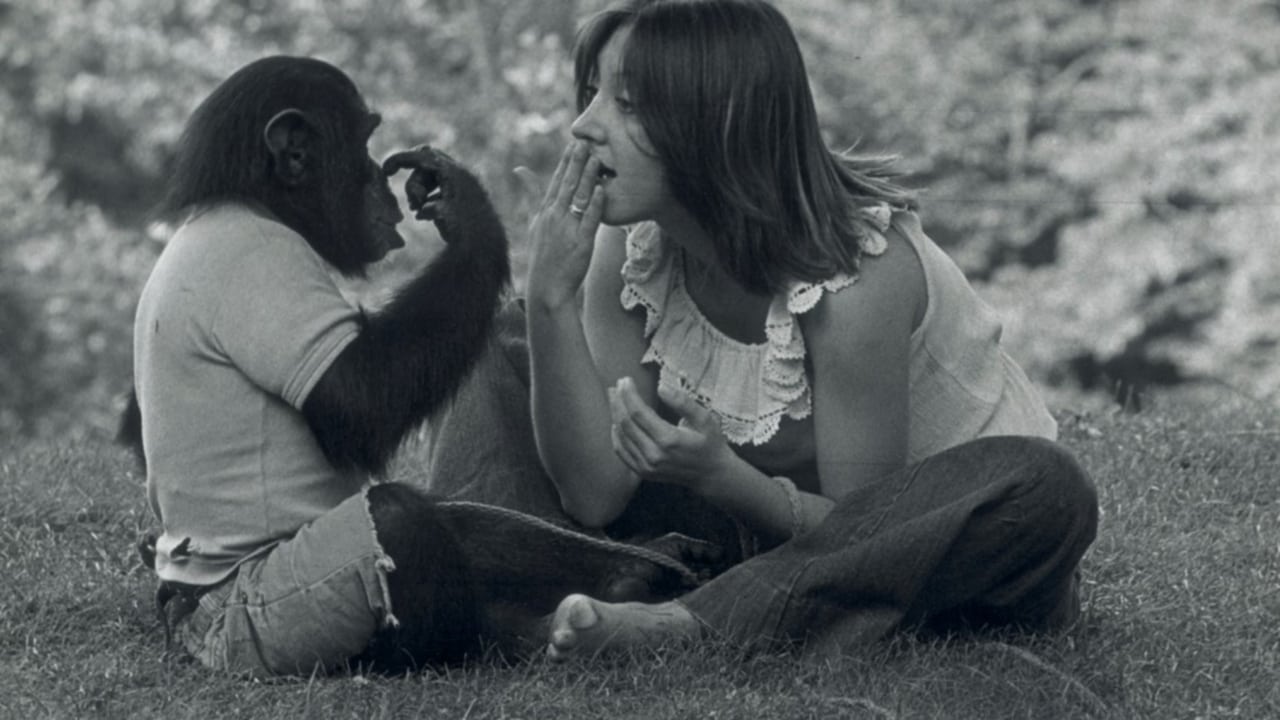

What makes it different from others?
... View MoreOne of the best films i have seen
... View MoreThere are moments that feel comical, some horrific, and some downright inspiring but the tonal shifts hardly matter as the end results come to a film that's perfect for this time.
... View MoreThrough painfully honest and emotional moments, the movie becomes irresistibly relatable
... View MoreOstensibly a documentary about the world's most famous chimpanzee, who was taught to communicate with humans via sign language during a university experiment of the 1970s, PROJECT NIM is in fact about human failings. It's another nature-themed documentary that, along with the likes of BLACKFISH and THE COVE, makes you despair for mankind.The story starts out well, with the impossibly cute baby chimp brought up as a human. Soon, though, the behaviour of some of the "scientists" looking after Nim begins to grate; some of them are a little too involved with their subject, while others are plain creepy. Later, Nim suffers a huge betrayal, and at this point the documentary takes a downward turn into one of the most depressing ever.Hardly a heartwarming story then, in that it focuses on misery and despair for the majority of the running time, but nevertheless an important story that serves to highlight man's inhumanity towards the world he inhabits.
... View MoreCompared to such superstars of animal linguistics as Alex the talking parrot and Koko the signing gorilla, the late Nim Chimpsky (1973–2000) was very much a lesser light. All the same, his eventful early life has provided filmmaker James Marsh with the material for a fine documentary, as intense and involving as a first-rate fiction film; this one plays like it might have been scripted by Arthur C. Clarke (from a first draft by J.D. Salinger) and directed by Herzog ("Kaspar Hauser") or Truffaut ("Wild Child"). The story begins when Columbia psychologist Herb Terrace prevailed on a colleague (and ex-girlfriend), Stephanie LaFarge, to add a chimp to her already blended family of two adults, seven children and a German shepherd, raise him like a human child (which would include breast feeding) and teach him American Sign Language; the goal was to test Noam Chomsky's well known hypothesis that only the human brain could generate grammatical speech. Nim Chimpsky (get it?) spent a year or two in the loosey-goosey LaFarge household on the Upper West Side—my wife used to see him stumping around the 'hood in diapers with his overprotective minders—then, when it appeared that his sign language skills were being neglected, he was sequestered with Terrace's assistant in a disused mansion in the Bronx and brought down to Columbia for classroom catchup sessions. By this time, he had grown into an unruly adolescent with long, sharp fangs, a short attention span and the strength of many men. When he attacked one of his sign-language tutors and tore her cheek open, Terrace shut the project down, and Nim was banished to the primate research center in Oklahoma where he was born. Terrace added insult to this act of treachery by publishing a book in which he portrayed Nim as a "brilliant beggar" who mimicked his teachers to get rewards—hugs, snacks and the occasional puff on a joint. Except for supervised outings (and a few brief escape attempts), Nim spent the rest of his life behind bars.Since Nim was both an experimental subject and, at least for a few years, a chimp célèbre in his own right, Marsh had plenty of video clips to choose from; only purists will object to a couple of Errol Morris–style reenactments, and the interviews with the participants, thirty-odd years later, are fascinating. Terrace, especially as seen in the archival footage with his slicked-down comb-over and caterpillar mustache, makes a fine comic villain; his self-serving shiftiness contrasts amusingly with Nim's innocent seductions. We can empathize with Terrace's former assistant, Laura Pettito (now apparently a well known neuroscientist, though it isn't mentioned in the film), as she recalls how a brief, much-regretted affair with her boss compelled her to quit the project. Stephanie LaFarge comes across as a good-hearted, spacey 70s mom, the kind of character Dianne Wiest used to play; standouts among the supporting cast include Joyce Butler, a strong-minded alpha female who discouraged Nim from biting (biting her at any rate) by nipping him on the ear; and Bob Ingersoll, an affable Deadhead at the Oklahoma center who became Nim's BF and protector in his later years. The film wisely sidesteps the whole Chimpsky-Chomsky debate about animal communication, a debate that continues to sputter only because the Chomskyites keep moving the goalposts; I think most viewers would agree with something Bob Ingersoll said in an interview (don't think it's in the film) to the effect that the difference between Nim's signing "Stone smoke now!" and anyone else's saying "Dude, let's spark up a fatty!" is pretty much academic.
... View MoreIn Walter Hill's GENOCIDE 101 (GERONIMO), several Apache turncoats learn that trusting The White Man can backfire on you: they, too, are rounded up, disarmed, and sent to the concentration camps whose blueprints the Nazis would one day study. In PROJECT NIM, a handful of scientists- whose primary concerns seem to have been getting laid- kidnap and "indoctrinate" an innocent child (because ALL animals are innocent children) before abandoning him. Proof: Terrace actually went on camera and declared his own research an abject failure- and he was WRONG. (The fact that this guy threw in the towel when the supply of nubile young assistants dried up was just coincidence, right? And the fact that he was unable to see proof sitting right before his eyes was just myopia, right? My hairy ***...) In an age when we can literally kick the mentally ill and the physically infirm to the curb in this country, the inherent inhumanity these people display isn't at all surprising. The lowest of the Low would have to be the Mengele of the animal research facility, a murderer named Mahoney who wistfully says that "chimps are forgiving. They'll forgive you." Oh yeah? On what planet? Only Bob Ingersoll has the right to go to sleep knowing that he at least TRIED to make Nim's life livable. Forgiveness? ****, some of these people didn't even acknowledge that Nim could OUTSMART them.
... View MoreAs someone who didn't care for "Man on Wire," this director's previous film, and as someone who thinks critical response is often over-rated for documentaries, I was pleasantly surprised by "Project Nim." I thought it was the best documentary of 2011, and my wife thought it was the best film of 2011. This movie was extremely compelling from the start, and very moving throughout. I also thought it was interesting that what was "acceptable" science in the 70's has evolved into something that we look back on as something inhumane. What a difference 40 years makes! And the doctor who ran the study? What a jerk, not just in the callousness he displayed in his Nim experiment, but in the lack of ethics he had in sleeping with his students.
... View More